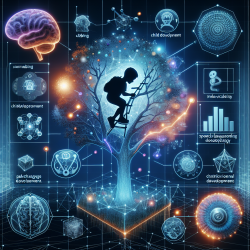Introduction
In the realm of child development, understanding how children assess and manage risks is pivotal. The Virtual Risk Management—Exploring Effects of Childhood Risk Experiences through Innovative Methods (ViRMa) project, conducted in Norway, provides a groundbreaking approach to studying these aspects through the use of virtual reality (VR), eye-tracking, and motion capturing. This study aims to shed light on how children's past experiences influence their ability to handle risky situations, thereby offering invaluable insights for educators and practitioners.
The Importance of Risky Play
Research indicates that risky play is crucial for developing children's risk assessment and management skills. It also promotes resilience, social skills, physical activity, and overall well-being. However, the opportunity for such play is often restricted due to safety concerns. The ViRMa project addresses these challenges by using VR to simulate real-life risk scenarios in a controlled environment, allowing children to engage in risky play without the potential for physical harm.
Methodology and Findings
The ViRMa project involves 500 children aged 7-10 years from primary schools in Norway. Using VR scenarios like street crossing, river crossing, and playground activities, the study measures children's risk assessment, willingness, and handling skills. Motion-capturing sensors track their movements, while eye-tracking technology provides data on their focus and attention during tasks.
The findings suggest that children with more past experiences in risky play are better equipped to manage risks in these simulated environments. This correlation highlights the importance of providing children with opportunities for risky play to enhance their developmental outcomes.
Implications for Practitioners
For practitioners in speech language pathology and related fields, the insights from the ViRMa project can inform strategies to support children's development. By integrating VR technology and innovative methods into educational practices, practitioners can create safe environments for children to develop essential risk management skills. This approach not only enhances learning outcomes but also contributes to children's overall health and well-being.
Encouraging Further Research
The ViRMa project opens new avenues for research in child development and education. By utilizing cutting-edge technology, researchers can explore the long-term effects of risky play on children's development. Future studies could expand on these findings by incorporating diverse cultural contexts and longitudinal data to understand how risk management skills evolve over time.
Conclusion
The Virtual Risk Management project represents a significant advancement in understanding child development. By leveraging innovative methods and technology, this study provides valuable insights into how children's past experiences influence their ability to handle risks. Practitioners and researchers are encouraged to explore these findings further to enhance educational practices and improve outcomes for children.
To read the original research paper, please follow this link: Virtual Risk Management—Exploring Effects of Childhood Risk Experiences through Innovative Methods (ViRMa) for Primary School Children in Norway: Study Protocol for the ViRMa Project.










